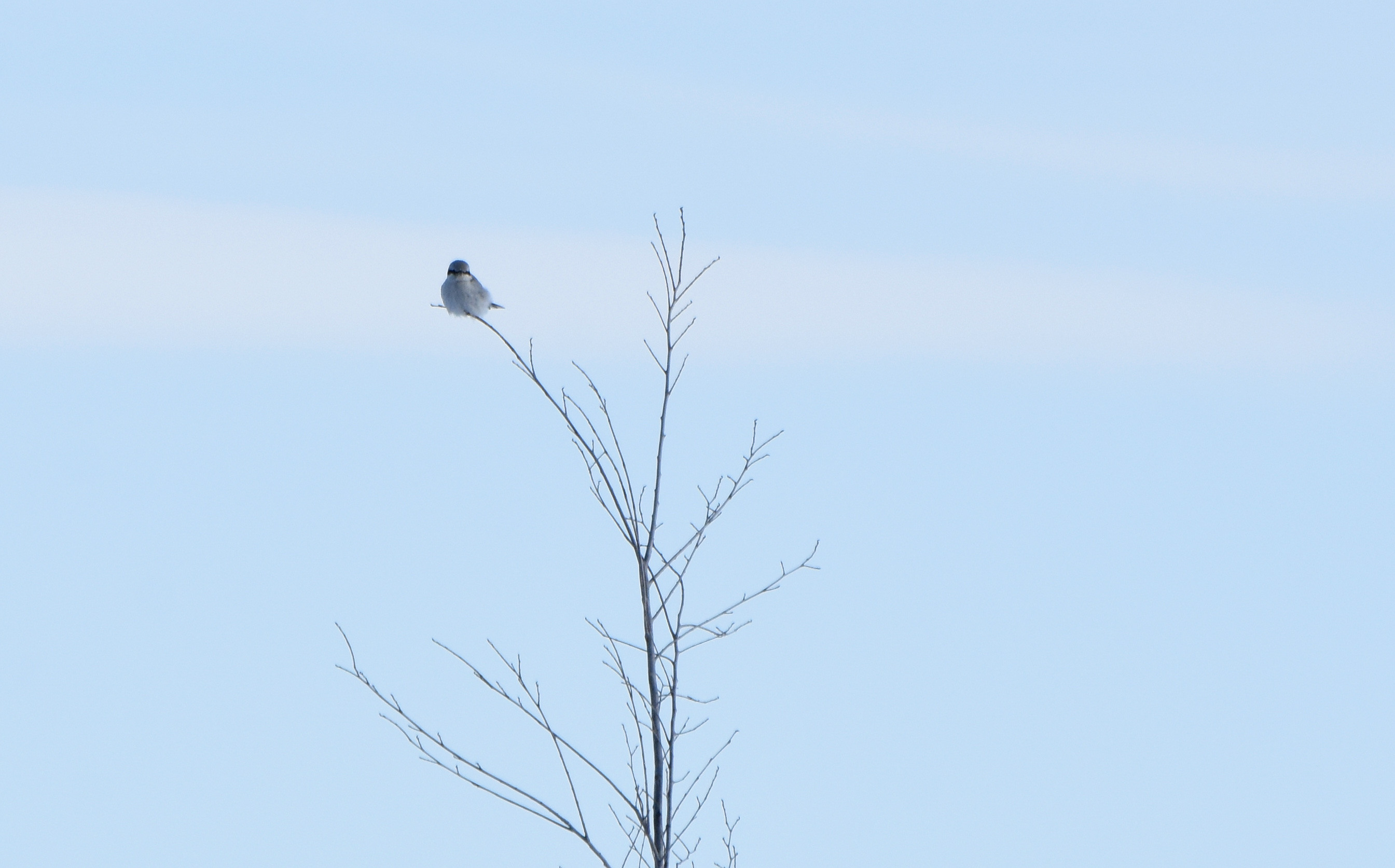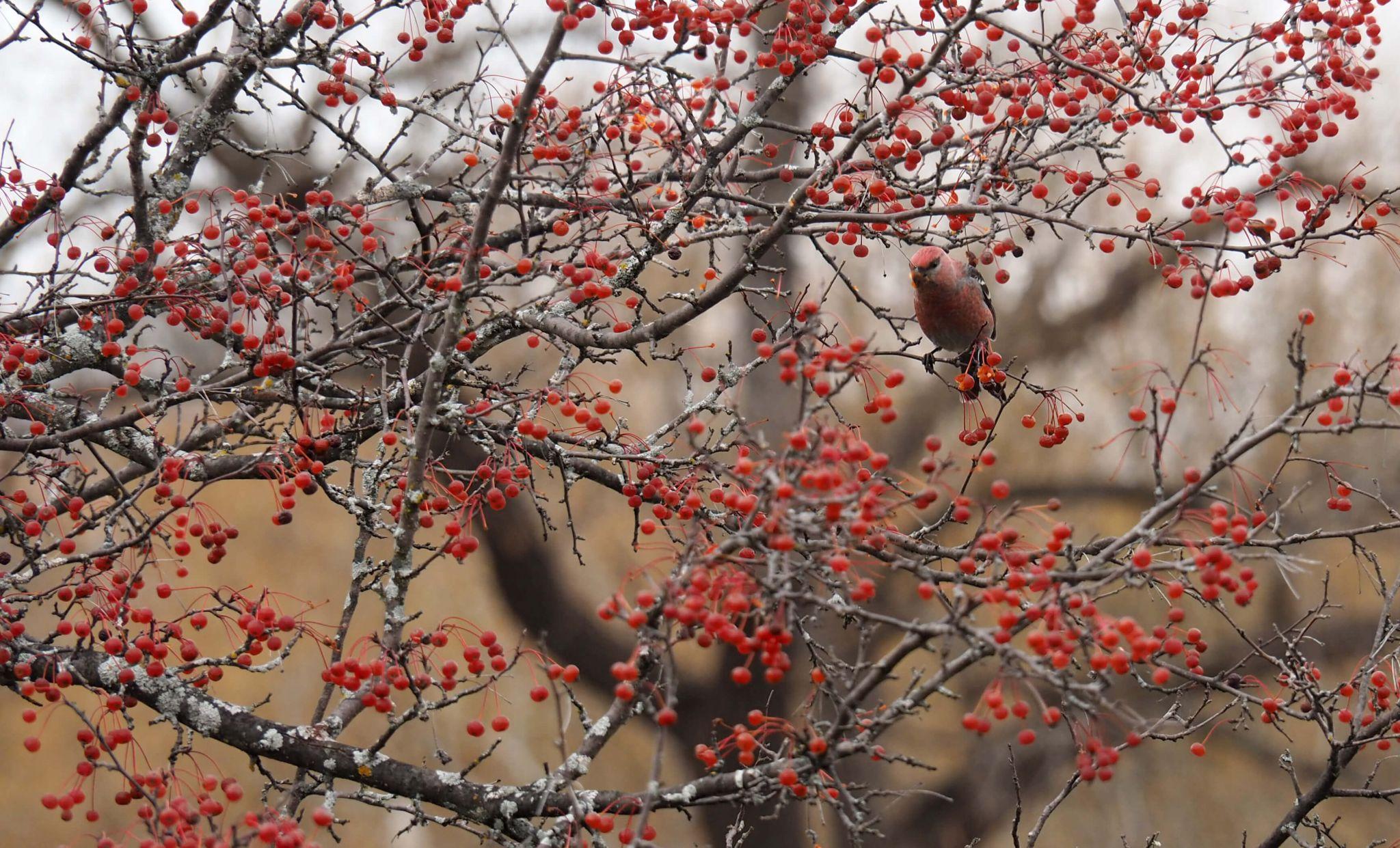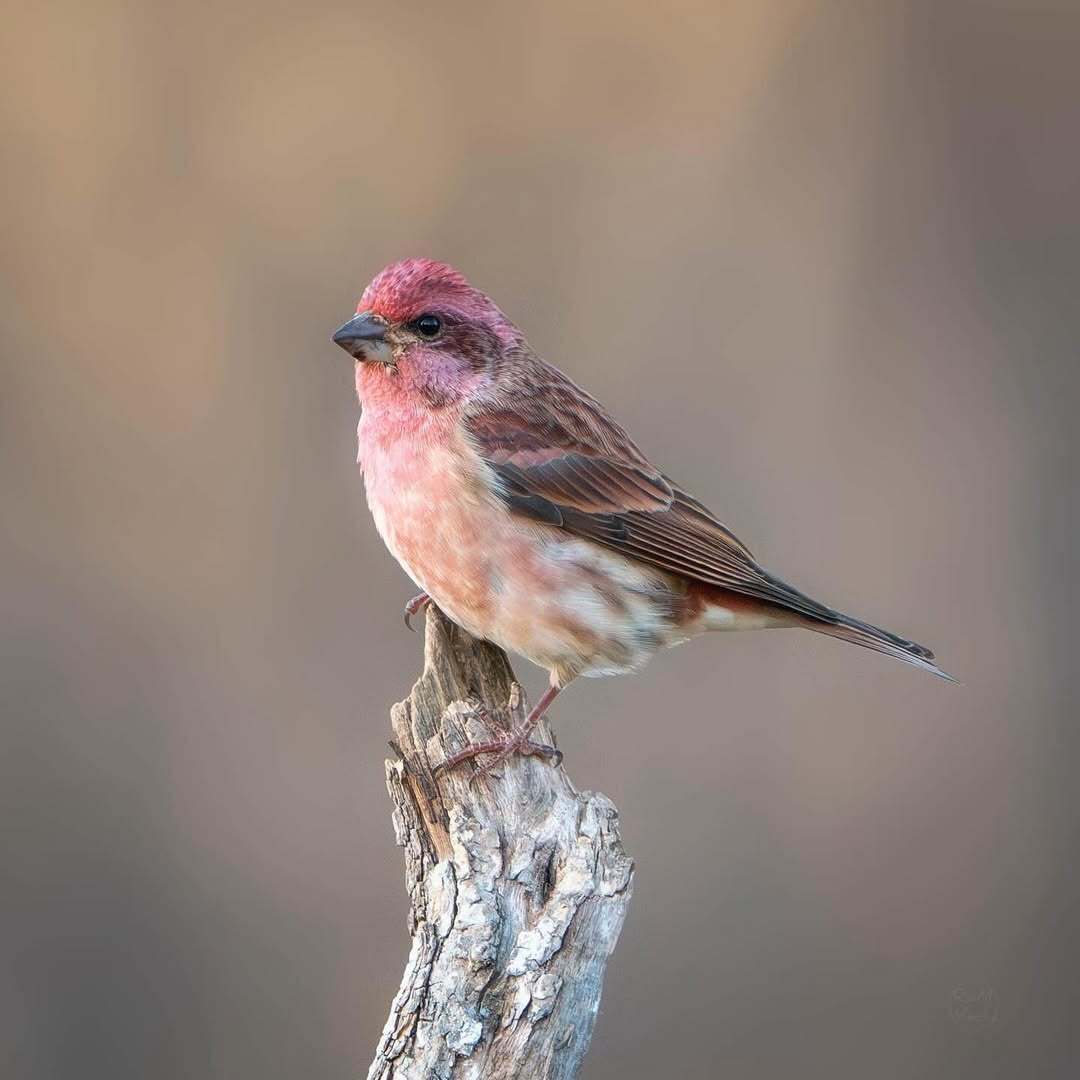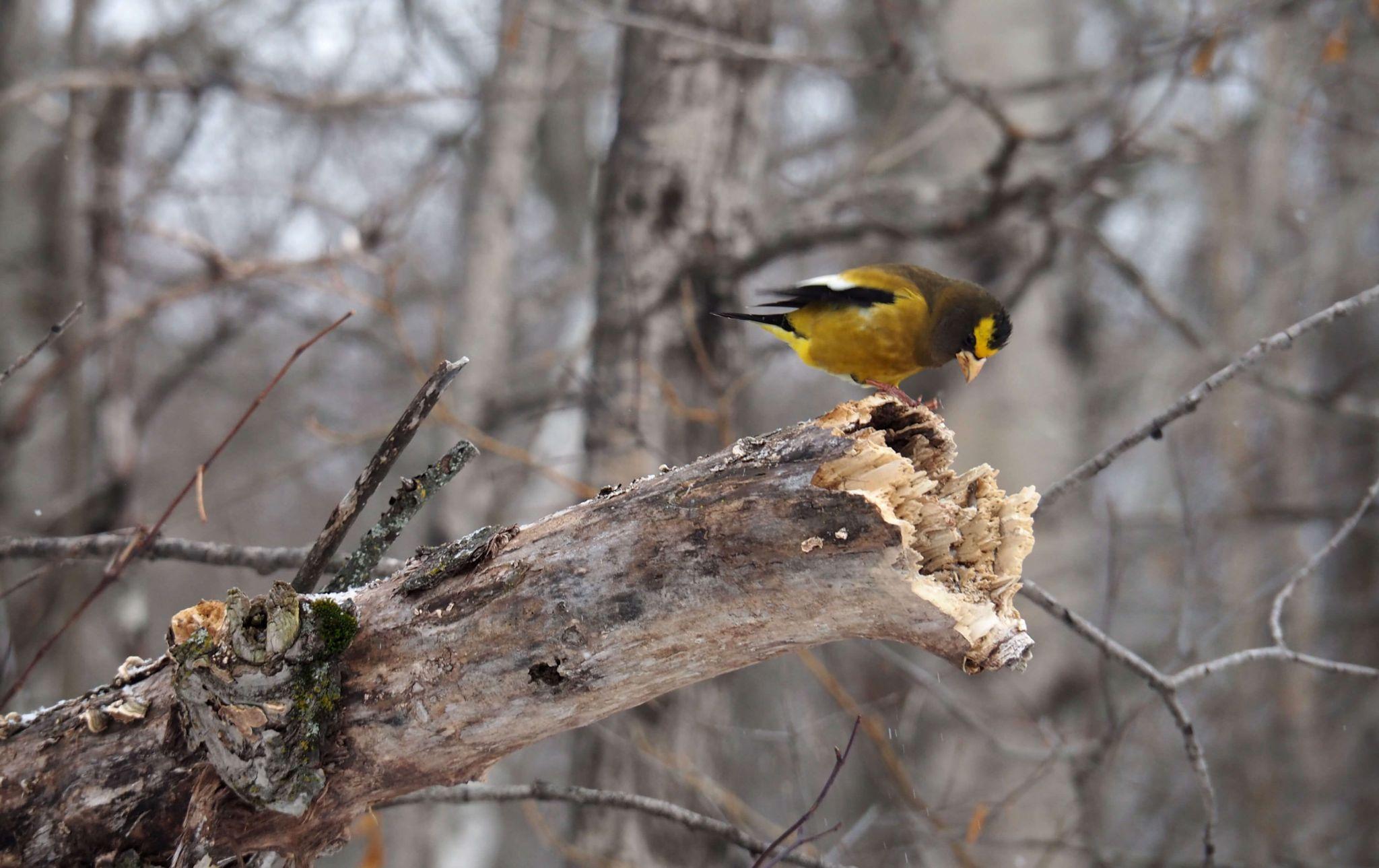Winter brings many changes to the Greenbelt’s landscape. The forests are full of bare trees, the wetlands are iced over and agricultural fields are snow-swept. Animals and plants, abundant in the summer, are now relying on their winter strategies to survive the cold.
Some species escape the harsh winter conditions in Canada’s North to enjoy the relatively mild winter in National Capital. The natural heritage of the Greenbelt hosts many of these winter visitors.
Winter Finches
Finches are birds that survive the winter by eating seeds and fruit from trees and shrubs. Some trees and shrubs produce large quantities of fruit and seeds only every three to five years. In particular, each stand of cone-bearing trees, such as black spruce, white pine and Eastern hemlock, could have many seeds, or very few, depending on the year.
Irruptive northern finches, like evening grosbeak (a species at risk), purple finches and white-winged crossbill, start arriving from their summer haunts in the boreal forest to feast on these abundant seeds. Other visitors, like the pine grosbeak and Bohemian waxwing, enjoy a variety of fruit-bearing trees in the Greenbelt, including mountain ash and serviceberry. Finding these species can be tricky, but their bright plumages are rewarding to see!
You can see these winter visitors throughout the Greenbelt, but you’re most likely to find them in Pine Grove, Stony Swamp or Mer Bleue along the many hiking, snowshoeing and cross-country ski trails.
Field Specialists
Did you know that open agricultural fields provide hunting grounds similar to those found on the Arctic tundra? They provide the perfect habitat for Snowy Owls and Rough-legged Hawks to come and visit from the Arctic where they nest on the open tundra.
Voles, moles and mice create mazes underneath the snow which are impossible for humans to perceive above the snowpack. Snowy Owls and Rough-legged Hawks depend on their sensitive hearing and acute eyesight from above to detect the movements of rodents. Once detected, these hunters will swoop down to collect their prey.
Snowy Owls are often well hidden on the ground. Sometimes, they will give you an opportunity to see them by perching on a light post, fence or tree. We all love to see owls in the Greenbelt. They are beautiful and fascinating. But, please remember to respect their natural environment, and admire them only from afar.
Rough-legged Hawks are often found hovering over a field or perched on small twigs at the top of a tree.
Keep a look out for these winter visitors when passing through the Greenbelt!
Boreal Species

Almost every winter, Northern Shrikes (or Butcher Birds) come down from the boreal forests to avoid the harsh northern winter. Shrikes are known to impale their small prey on thorny bushes or barbed wire to store for a rainy day.
Northern Shrikes flick their tails constantly while perched on top of a conifer, a tell-tale sign that this masked marauder is present. Chickadees and sparrows often mob shrikes, letting everyone know that a predator is around. As you can see, Northern Shrikes are an interesting northern visitor to the Greenbelt, but may be unpopular with the Greenbelt’s local resident Chickadees!
Have you spotted any of these winter visitors in the Greenbelt?
Record your bird sightings and upload your photographs to iNaturalist or eBird, a mobile-friendly tool that’s easy to use.
If you need a little help identifying birds, check out the free app offered by the Cornell Lab of Ornithology, Merlin Bird ID.


